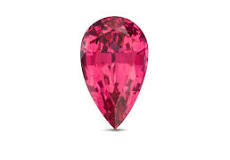
Spinel: The Enigmatic Gem of Rebirth and Radiance
Exploring the geology, metaphysical resonance, and raw crystal allure of one of nature’s most underrated jewels.
The Geological Elegance of Spinel
Spinel, a gemstone often shrouded in mystery and mistaken identity, is a magnesium aluminium oxide that belongs to its own mineral class. With a hardness of 8 on the Mohs scale, it is remarkably durable—making it ideal for jewellery, especially in raw or minimally polished forms. Spinel forms in isometric crystals, often presenting with sharp octahedral shapes that make for exquisite mineral specimens in their uncut state.
Its hues are a visual symphony—from vivid reds, pinks, and purples to steely blues, greys, and even black. This diversity comes from trace elements: chromium gives red spinel, cobalt induces blue, and iron contributes to darker shades.
The most famed deposits hail from:
-
Myanmar (Burma) – renowned for its "Jedi" red and vibrant pink spinels.
-
Sri Lanka – yielding a rainbow of colours in alluvial gravels.
-
Tanzania and Vietnam – sources of fine blue and lavender tones.
-
Afghanistan – producing deeply saturated purples and magentas.
Unlike synthetic imitations or mislabelled “ruby spinels” of the past, modern gemstone science now celebrates Spinel for its own distinct identity and brilliance.

Spinel’s Energetic and Healing Properties
Spinel is known as a stone of revitalisation and release. Where some crystals soothe or elevate, Spinel re-ignites—stimulating energy, endurance, and passion in both physical and emotional realms.
Key Energetic Traits:
-
Red and Pink Spinel: Aligns with the Root and Heart chakras, encouraging vitality, grounding, and emotional rejuvenation.
-
Blue and Violet Spinel: Activates the Throat and Third Eye, aiding clarity in communication and intuitive expression.
-
Black Spinel: Offers potent protection, transmutation of negative energies, and a strong energetic anchor.
Spinel is often chosen during periods of burnout, grief, or life transitions, acting as a catalyst for renewal and inner strength. Its energies are bold yet balanced—supportive for those who need to rekindle their creative spark or recover a sense of personal power.
The Collector’s Appeal: Spinel in Raw and Mineral Form
While cut Spinel is a beloved alternative to ruby or sapphire in high jewellery, its raw crystal form reveals an entirely different character—organic, complex, and deeply grounding.
Spinel crystals can exhibit sharp geometric forms, often with natural terminations and vivid colour zones. This makes them not only ideal for crystal collectors but also perfectly suited for mineral specimen jewellery, where the story of the Earth is worn without alteration.
The scarcity of high-quality raw spinel, particularly in bright hues, lends it significant collector value. Unlike more commonly available crystals, fine spinel in untouched form is both visually arresting and energetically potent.
Spinel Compared: Not Just a Ruby Lookalike
For centuries, Spinel was misidentified as ruby, owing to their similar colouration and shared mining localities. In fact, some of the most famous “rubies” in royal regalia—such as the Black Prince’s Ruby in the British Imperial State Crown—are actually Spinel.
However, unlike ruby (a variety of corundum), Spinel has a different crystal structure, more vibrant dispersion (sparkle), and often forms in freer shapes suitable for raw crystal jewellery. Where ruby is intense and assertive, Spinel feels gentler and more restorative—a quiet strength rather than a blazing fire.
Compared with garnet or tourmaline, Spinel generally possesses a higher brilliance and clarity, particularly in its natural state. And while not as ubiquitous in the metaphysical scene, this rarity only enhances its desirability among those who seek out the unusual and meaningful.
Spinel in Jewellery: The Raw Appeal
At Oryssia, we hold a special reverence for crystals in their uncut forms—and Spinel is a shining example of why. Its sharp edges, naturally occurring terminations, and vivid colours lend themselves beautifully to:
-
Crystal specimen rings: Uncut octahedrons mounted to retain raw beauty.
-
Mineral specimen necklaces: Suspended in minimalist settings that highlight Spinel’s natural geometry.
-
Handmade gemstone jewellery: Each piece is unique, channelling the Earth’s power through undisturbed crystal structure.
Whether pink or black, cobalt blue or grey, raw Spinel resonates with those seeking to wear their inner transformation—not just adornment, but a talisman of resilience and rebirth.
Myth, History, and the Silent Nobility of Spinel
While Spinel lacks the extensive mythological canon of amethyst or turquoise, its historical presence is quietly profound. Worn by emperors and mistaken for rubies in royal collections, it has always been a stone of nobility and protection.
In ancient Persia and India, Spinel was associated with immortality and inner strength, gifted to warriors and spiritual seekers alike. Modern metaphysical traditions echo these sentiments, describing Spinel as a stone of hope, transformation, and deep soul alignment.

A Closing Reflection
Spinel is for the seekers—those drawn to authenticity over opulence, to energy over glamour. In its raw form, it is not just beautiful but alive with narrative: of geology, of endurance, of soul alchemy.
As part of a curated mineral specimen collection, or worn close to the skin in intuitive jewellery, Spinel speaks not of status—but of story.
And in the spirit of Oryssia, where each piece is chosen not only for its aesthetic but for its resonant truth, Spinel continues to whisper strength into the hands and hearts of those ready to transform.